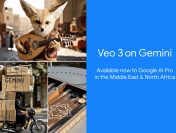Earlier this month, Twitter made a strategic decision to adopt a regional management structure making its category-based structure redundant. This has given way for the global content partnerships team to be run by executives for five regions – the US, Latin America/Canada, Europe/Middle East/Africa, Japan/Korea, and Asia-Pacific – each reporting directly to Kay Madati, Global Vice President and Head of Content Partnerships, Twitter.
The decision lays emphasis on Twitter’s priority for regional content. Arabian Marketer caught up with Mr Madati at Cannes Lions to dig more into the social media giant’s regional content plans. According to him, the next stage of growth for Twitter in terms of partnerships is going to be localized deal arrangements with content providers. Citing the Trump-Kim Singapore Summit example, Mr Madati says, “The event is so global and was trending in Dubai too for almost a week. There’s tremendous opportunity in that kind of global content to be localized.”
Spotlight On MENA
From a brand point of view too, may companies are travelling across regions. Mr Madati feels that the Middle East and North Africa (MENA) region has “enormous amount” of usage growth and an opportunity to marry user growth with content opportunities in the categories of sports and music in the regions is tremendous.
The company has nearly doubled its content partnerships from 16 last year to 30 this year, and is “still seeing lot of opportunities to export global content.” In MENA, it had a special show #HawanahZein for Ramadan this year. Created in partnership with Hollywood production firm Propogate and Arabic language content creators Yallafeed, part of Dubai-based Stepfeed group, the live show started streaming on May 17 and covered news, social commentary, and content about news, celebrities, sports and entertainment. Currently, it also has a localized content on FIFA World Cup with #YallaGoal.
Making Magic
The genesis for good content, according to Mr Madati, lies in marrying the natural and organic conversations on the platform to somebody who can produce content in the categories of news, sports, entertainment and lifestyles. “That’s when magic happens,” he says pointing out to Twitter’s learnings from early days that taking out content straight from television and putting it out on Twitter doesn’t work.
As users have different expectations from the platform – on how they consume content and why they come there, Twitter works closely with its content partners to help them understand how to produce platform-specific content. It also has to deal with content partners who may come in with fixed ideas of content creation. While Twitter, according to the global content head, is not in the business of understanding what it takes to make content, it is “very” persuasive and uses analytics to guide its partners. “We approach our partnerships with flexibility and the ability to actually say to our partners: ‘This is what we know is on the platform and what we think would work on it.’ We actually put data science to content execution,” he says.




